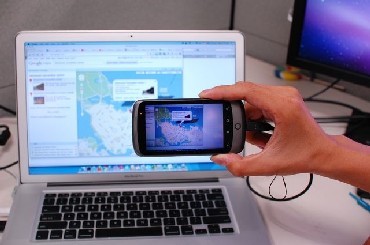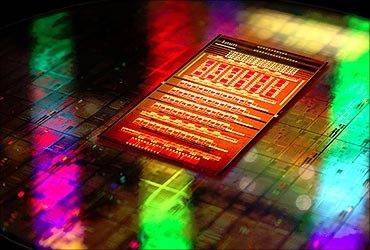Leslie Dmonte in Mumbai
Peter Sondergaard, senior vice-president at Gartner, thinks Indian service providers are capable of dealing with the shift mainly because of their broad understanding of business processes.
Peter Sondergaard, senior vice-president at Gartner and global head of Gartner Research, is bullish on the future of tablet PCs. He rattles off statistics to prove his point: "At the end of 2010, 10 million tablets were sold. We expect that by 2016, a billion tablets will have shipped."
He should know, having spent 27 years in the IT industry, including a stint as a research director at International Data Corp (IDC) in Europe.
...
How PC architecture will give way to mobiles
What do these numbers imply? It points out to an "architectural shift" towards mobiles from PCs, which "I think companies are not really realising yet", says Sondergaard, adding, "they need to change their architecture very fast. The number of mobile PCs and smartphones last year exceeded that of desktop PCs, which is why people say 'mobility is coming' and 'the world is going mobile'. My message is, it already did."
Right now, the installed global base of tablets is only 20 million. So the talk around tablets may appear to be more of a hype, but Sondergaard believes that the platform of usage now is not the desktop but essentially a mobile environment, and "most Indian service providers have spent the last 20 years building architectures that are centred around the PC".
"It's an architectural shift that in essence has happened, and therefore the design criteria for how you design applications becomes very user-centric, and one which is driven by the software environments that reside on any sort of smartphone - whether it's an iOS from Apple, or Android from Google, or a Windows 8 from Microsoft," notes Sondergaard, adding, "I think Indian service providers need to latch onto this very fast if they are not to lose the power that they've actually had in the market."
...
How PC architecture will give way to mobiles
But India is still an unpenetrated market with ample scope for desktops being sold in smaller cities and towns. Sondergaard acknowledges this but explains that all "architectural shifts in fact happen extremely slowly and I think it's important that things are put in context".
He admits that the PC market will still be extremely large, and there will still be a large number of consumers and for that matter, businesses in the very rapidly emerging economies that will buy into PC platforms.
"But the growth rate in India and the growth rate in China in terms of smartphone devices will exceed that of PCs, and therefore you can talk about some part of the world leaping architecturally and therefore skipping a generation of the more fixed, PC-based environment," he points out.
...
How PC architecture will give way to mobiles
He segues from the mobile space to highlight another trend in the IT industry - an increasing commoditisation of services, which will lead to increased competition for basic IT services.
"I think some of the Indian service providers, certainly the three large ones, have understood that that's where they need to move their messaging, and I think from a strategy perspective that is where they are moving," says Sondergaard, adding that it also means that companies will have to learn how to sell services to other entities without, of course, disrupting the relationship they have with their existing customer base.
"I think Indian service providers have a strong value proposition and capability of making this change, mainly because of the extremely high level of education and broad understanding of business processes and how it work in large corporations globally, and so I am not fearful. So I think we are seeing sort of the second generation of business-focused IT services that will start to influence things," he adds.
...
How PC architecture will give way to mobiles
Sondergaard is also excited about "a confluence of four forces of which social computing is one. The three others are cloud, what we call context-aware computing or future software architectures that will be built on mobile environments, and third is what we call the 'evolution towards a pattern-based strategy', which today is exemplified around some of the trends like big data (the challenge that many companies face in terms of managing the huge volumes of information often created by, for example, the use of social media platforms)," he says.
Social computing, he explains, is more a behavioural aspect in systems than a technology, but it is something that Gartner expects to very rapidly become incorporated in all aspects of business systems.
Companies, he says, will need to react to the speed at which software providers provide this functionality. He cites the example of how KLM (a Gartner client) used social computing to communicate with its customers during the ash cloud (2010) which left many passengers stranded around the world.
...
How PC architecture will give way to mobiles
After the crisis, KLM has built social computing into how they deal with customers. And, recently, KLM arranged for a special flight based on the interaction from a group of customers who used social media platforms to suggest the destination.
One can almost say then that analytic tools are the combustion engine of the 21st century, says Sondergaard who believes that Business Intelligence was "a sort of the ivory tower of analysing information".
"The long-term direction is that we want to be able to determine patterns in information, or deviations from patterns than allow organisations - whether it's the public- or private sector businesses - to take effective decisions. We've basically been recommending to clients that this is an issue for the CEO," he says.
...
How PC architecture will give way to mobiles
He acknowledges that many chief information officers do not recognise this, "but I also believe that an even larger number of CEOs don't really understand the power that they are not focusing on - the power of the information that they have and will be having over the course of the next five years," rues Sondergaard.
He concludes that the four trends he referred to - cloud, context (the environments that reside on top of the mobile platform that's changing the architecture of IT), social computing and pattern-based strategy - have an intersection point, which "is the new era of IT, because you could have a social media-based service that's run in the cloud which is based on mobile platforms, and it is contextually aware and uses information strategically to deliver value to customer as also to improve revenue, decrease risk and cost."
The sooner companies understand that they have to focus on this intersection point, the more successful they will become.









article